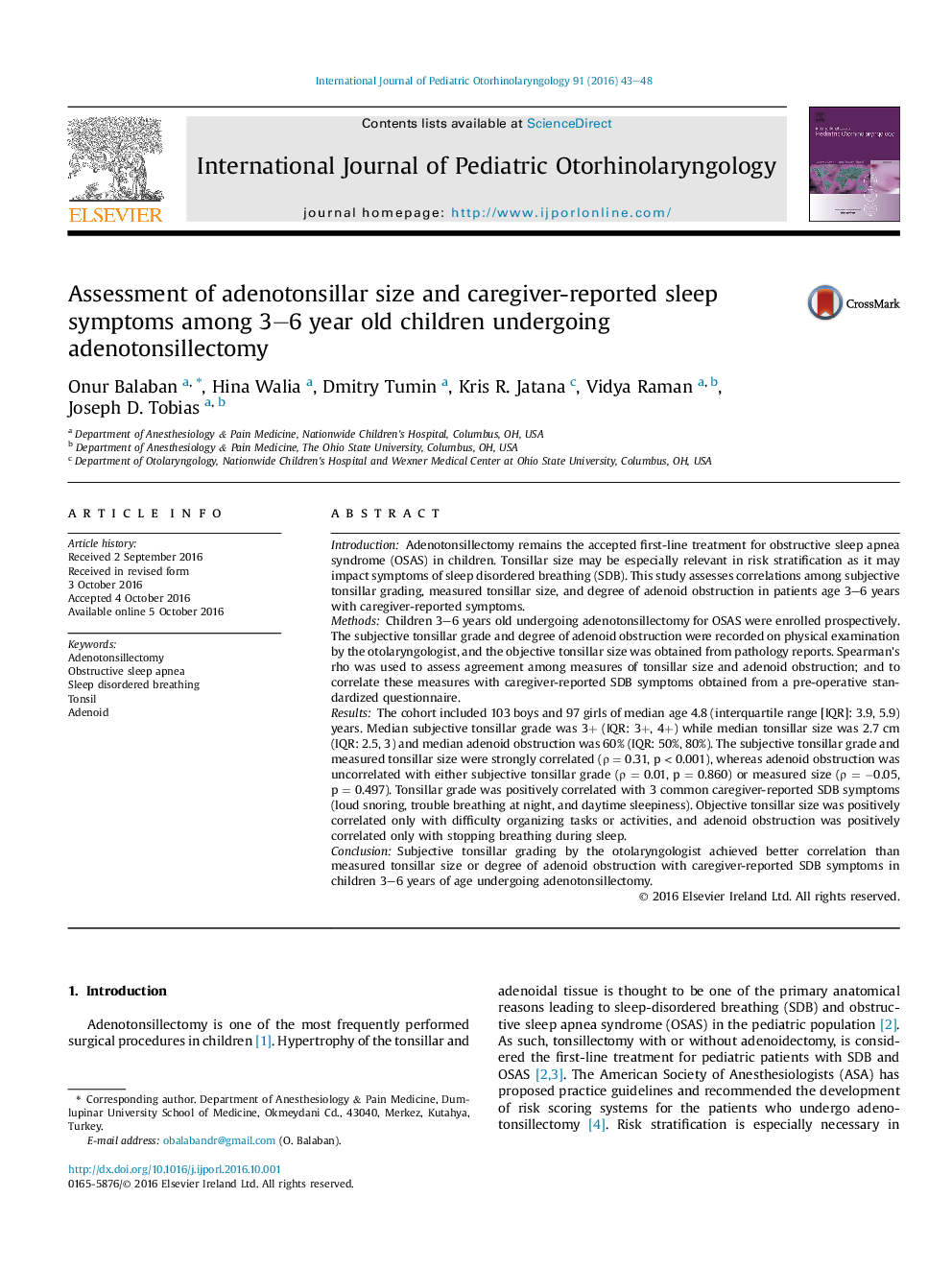| Article ID | Journal | Published Year | Pages | File Type |
|---|---|---|---|---|
| 6212946 | International Journal of Pediatric Otorhinolaryngology | 2016 | 6 Pages |
IntroductionAdenotonsillectomy remains the accepted first-line treatment for obstructive sleep apnea syndrome (OSAS) in children. Tonsillar size may be especially relevant in risk stratification as it may impact symptoms of sleep disordered breathing (SDB). This study assesses correlations among subjective tonsillar grading, measured tonsillar size, and degree of adenoid obstruction in patients age 3-6 years with caregiver-reported symptoms.MethodsChildren 3-6 years old undergoing adenotonsillectomy for OSAS were enrolled prospectively. The subjective tonsillar grade and degree of adenoid obstruction were recorded on physical examination by the otolaryngologist, and the objective tonsillar size was obtained from pathology reports. Spearman's rho was used to assess agreement among measures of tonsillar size and adenoid obstruction; and to correlate these measures with caregiver-reported SDB symptoms obtained from a pre-operative standardized questionnaire.ResultsThe cohort included 103 boys and 97 girls of median age 4.8 (interquartile range [IQR]: 3.9, 5.9) years. Median subjective tonsillar grade was 3+ (IQR: 3+, 4+) while median tonsillar size was 2.7 cm (IQR: 2.5, 3) and median adenoid obstruction was 60% (IQR: 50%, 80%). The subjective tonsillar grade and measured tonsillar size were strongly correlated (Ï = 0.31, p < 0.001), whereas adenoid obstruction was uncorrelated with either subjective tonsillar grade (Ï = 0.01, p = 0.860) or measured size (Ï = â0.05, p = 0.497). Tonsillar grade was positively correlated with 3 common caregiver-reported SDB symptoms (loud snoring, trouble breathing at night, and daytime sleepiness). Objective tonsillar size was positively correlated only with difficulty organizing tasks or activities, and adenoid obstruction was positively correlated only with stopping breathing during sleep.ConclusionSubjective tonsillar grading by the otolaryngologist achieved better correlation than measured tonsillar size or degree of adenoid obstruction with caregiver-reported SDB symptoms in children 3-6 years of age undergoing adenotonsillectomy.
